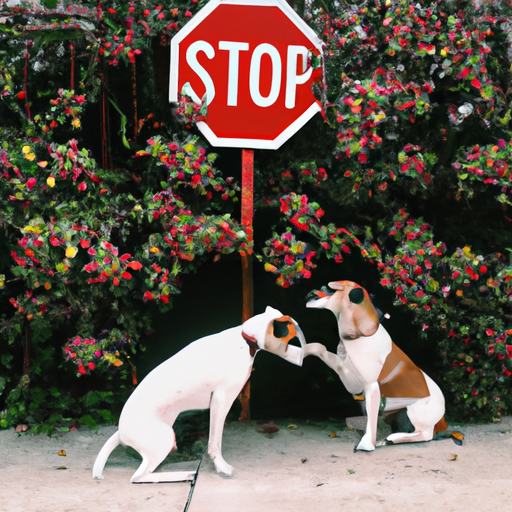Dog aggression is a common issue experienced by many dog owners. It is a problem that can result in serious injury to both dogs and humans if not addressed promptly. But don’t despair, there are effective ways to manage and stop aggression between dogs in the same household. This article will provide a comprehensive guide on how to handle this delicate issue.
Table of Contents
- Understanding Dog Aggression
- Causes of Aggression Between Dogs
- Steps to Stop Aggression Between Dogs
- Training Techniques
- When to Seek Professional Help
- Frequently Asked Questions
Key Takeaways
- Understanding the root cause of aggression is crucial in finding a solution.
- Training techniques can help manage and stop aggression.
- Professional help may be necessary in severe cases.
Understanding Dog Aggression
At times, you may witness dog aggression in your household, which can be a distressing situation. However, it’s important to remember that aggression is a form of communication for dogs. They may be trying to tell you that they are scared, anxious, or uncomfortable. Understanding this can be the first step in addressing the issue. The American Society for the Prevention of Cruelty to Animals provides a detailed guide on understanding dog aggression.
Causes of Aggression Between Dogs
There are several reasons why dogs might show aggression towards each other. Here are some common causes:
- Resource Guarding: Dogs may become aggressive when protecting their food, toys, or favorite spots.
- Fear: Dogs may react aggressively when they feel threatened or scared.
- Dominance: Some dogs may show aggression to establish dominance over others.
To better understand these causes, OneTopDog provides informative articles on dog behavior, such as Understanding Your Dog’s Body Language, which can be an excellent resource.
Steps to Stop Aggression Between Dogs
Once you understand the root cause of the aggression, you can take steps to manage and stop it. Here are some methods you can use:
Create a Safe Environment: Ensure that each dog has its own space, food bowl, and toys. This can help reduce resource guarding.
Use Positive Reinforcement: Reward your dogs when they behave well around each other. This encourages positive behavior.
Intervene Early: If you notice signs of aggression, intervene immediately before the situation escalates.
These steps are just a starting point. For more detailed tips on stopping aggression between dogs, check out How to Deal with Aggression Between Family Dogs.
Training Techniques
Training techniques can be very effective in managing and stopping aggression between dogs. Here are some techniques you can use:
- Obedience Training: Teach your dogs basic commands such as “sit,” “stay,” and “leave it.” This can help you control the situation when aggression arises.
- Desensitization: Gradually expose your dogs to each other in controlled situations to reduce fear and aggression.
- Counterconditioning: Change your dog’s emotional response towards the other dog by associating positive experiences with their presence.
For more training techniques, OneTopDog’s Training Tips can be a wonderful resource.
When to Seek Professional Help
In some cases, the aggression between dogs may be too severe to handle on your own. In such cases, it’s best to seek help from a professional dog behaviorist or trainer. They can provide personalized training plans and techniques to manage the aggression. The Association of Professional Dog Trainers is a great place to find a certified professional in your area.
Frequently Asked Questions
1. What should I do if my dogs fight each other?
– If your dogs are fighting, try to separate them without putting yourself at risk. Use a loud noise or water to distract them. Once they are separated, give them time to calm down before reintroducing them.
2. Can aggression between dogs be completely cured?
– The success of treating dog aggression varies and depends on the cause and severity of the aggression. In some cases, it can be completely resolved, while in others, it may only be managed.
3. Can neutering or spaying my dog reduce aggression?
– Neutering or spaying can reduce hormonal influences that may cause aggression. However, it’s not a guaranteed solution for all cases of aggression.
Remember, understanding and patience are key when dealing with aggression between dogs in the same household. With the right approach, you can create a peaceful environment for your dogs to thrive.



